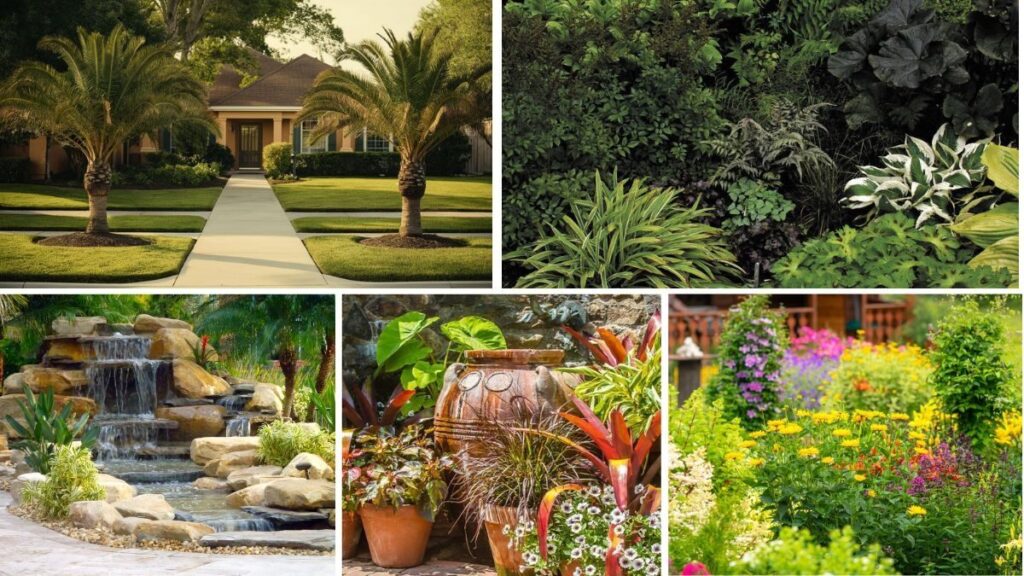In the world of garden design, the phrase “tropical” conjures images of vibrant colors, rich textures, and a profound sense of escape. It’s a style that transcends climate, inviting a feeling of perpetual vacation into any backyard. A tropical garden house, therefore, is more than just a structure; it’s a portal to a lush, exotic paradise, a sanctuary where the air feels warmer and the world’s worries fade with the rustle of broad leaves.
This is a design philosophy rooted in sensory experience. The goal is to overwhelm the senses in the most delightful way possible—to create a space that feels both wild and intimate, a personal Eden hidden from the world.
The Architecture: Embracing the Wild
The design of a tropical garden house should be less about rigid lines and more about organic flow, echoing the dense, untamed nature it seeks to emulate.
- Open and Airy Structures: The most effective tropical garden houses are designed to be permeable, blurring the line between indoors and out. Large folding or sliding glass doors are essential, as are louvered windows that allow for cross-ventilation. A lack of solid walls creates a feeling of a treehouse or a breezy cabana.
- Natural Materials: Use materials that feel at home in a rainforest. Dark, rich hardwoods like teak or ipe are perfect for decking and structural elements. For a more rustic, thatched-roof look, consider materials like palm fronds or bamboo. Stone, either as a floor or a decorative wall, adds a cool, grounded element that contrasts beautifully with the surrounding foliage.
- Elevated Design: A raised or stilted foundation not only protects the structure from dampness but also creates a dramatic, floating effect, as if the house is hovering above the garden floor. This adds to the sense of an exclusive retreat.

The Landscape: A Feast for the Senses
The true magic of a tropical garden house lies in its integration with the landscape. The house should feel like it grew out of the garden itself, not like it was dropped into it.
- Layered Foliage: Think in terms of layers, from the ground up. Start with a low canopy of large-leafed plants like elephant ears (Alocasia) and split-leaf philodendrons (Monstera). Above these, plant taller, slender palms such as Areca or Majesty palms. Finally, a layer of flowering plants adds bursts of color.
- Vibrant and Exotic Colors: The color palette is everything. It’s not just about green; it’s about the fiery reds of ginger flowers, the shocking pinks of bougainvillea, and the rich purples of bromeliads. These flowers should be used to create pops of color that guide the eye through the garden.
- Water Features: The sound of water is a key component of a tropical escape. A small, bubbling fountain or a a tranquil koi pond can create a sense of serenity and coolness. The reflective surface of the water also enhances the feeling of light and space.
The Interior: A Tranquil Oasis
Inside, the garden house should be a peaceful, uncluttered space that complements the extravagance outside. The design should prioritize comfort and simplicity.
- Minimalist Furnishings: Keep furniture simple and natural. A low, wooden daybed with soft, white cushions can serve as a place for napping or reading. A single, comfortable chair made of rattan or woven bamboo provides a place to sit and admire the view.
- Textural Richness: Bring the outside in through texture. Woven rugs, linen cushions, and soft, natural fabrics add a layer of comfort and warmth. A large, tropical-themed painting or a collection of botanical prints can serve as a focal point.
- Subtle Lighting: Avoid harsh overhead lights. Instead, use a mix of concealed LED strips and low-level accent lighting to create a warm, inviting glow. Outside, discreet landscape lighting can illuminate key plants and paths, making the garden just as enchanting at night as it is during the day.
A tropical garden house is more than a mere addition to a property; it is an invitation to a different way of living. It is a space for quiet moments of reflection, for the joyous embrace of nature, and for the creation of a personal paradise where every detail speaks of escape and serenity.



